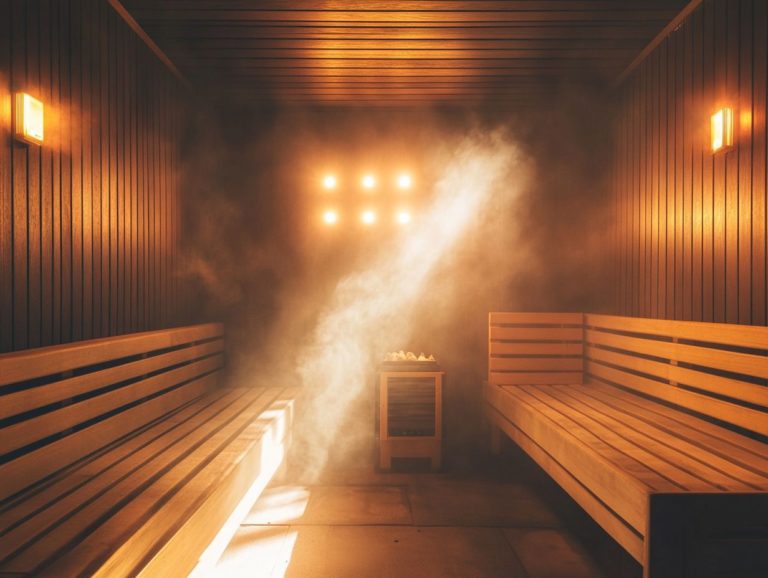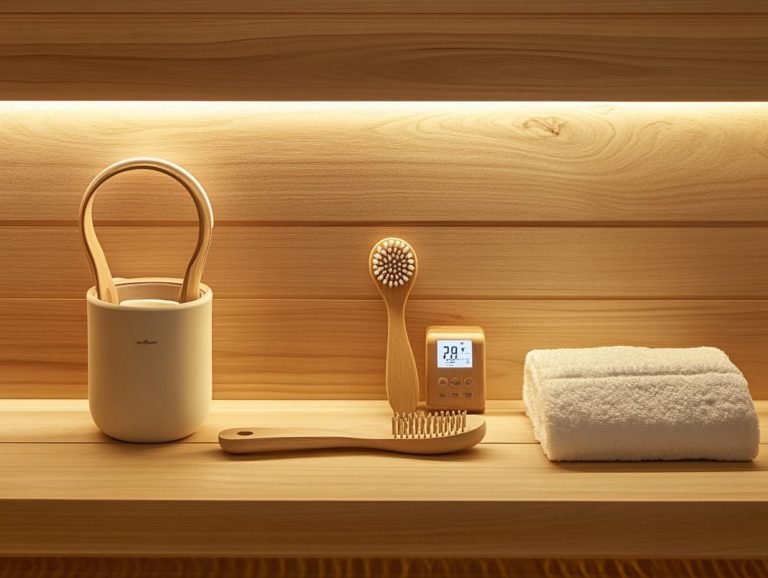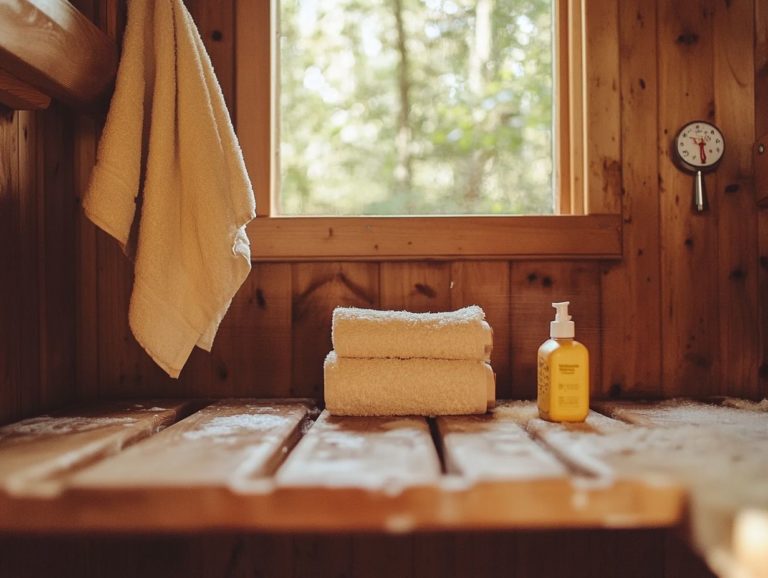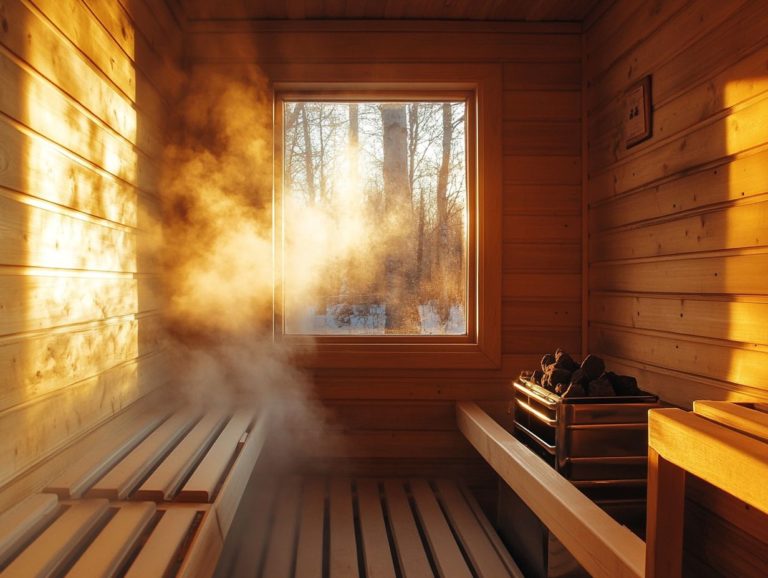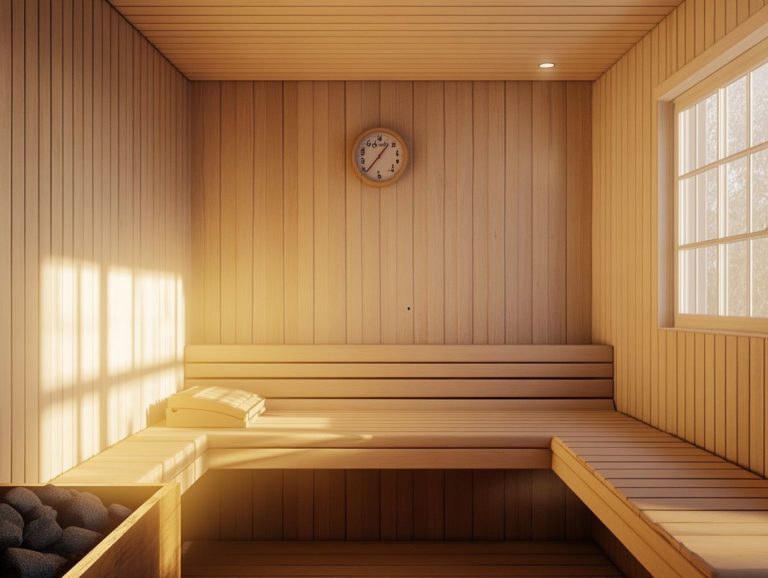Understanding Sauna Insulation and Maintenance
Sauna insulation is important for crafting an effective and enjoyable sauna experience.
When done right, proper insulation not only enhances how well the sauna uses energy but also helps maintain optimal temperatures. This ensures you can fully relax and reap the associated health benefits.
This exploration will delve into the different types of sauna insulation, comparing various materials and discussing crucial factors such as climate and usage.
This guide includes maintenance tips, troubleshooting common issues, and sharing best practices to ensure your sauna remains a sanctuary for many years ahead.
Contents
Key Takeaways:
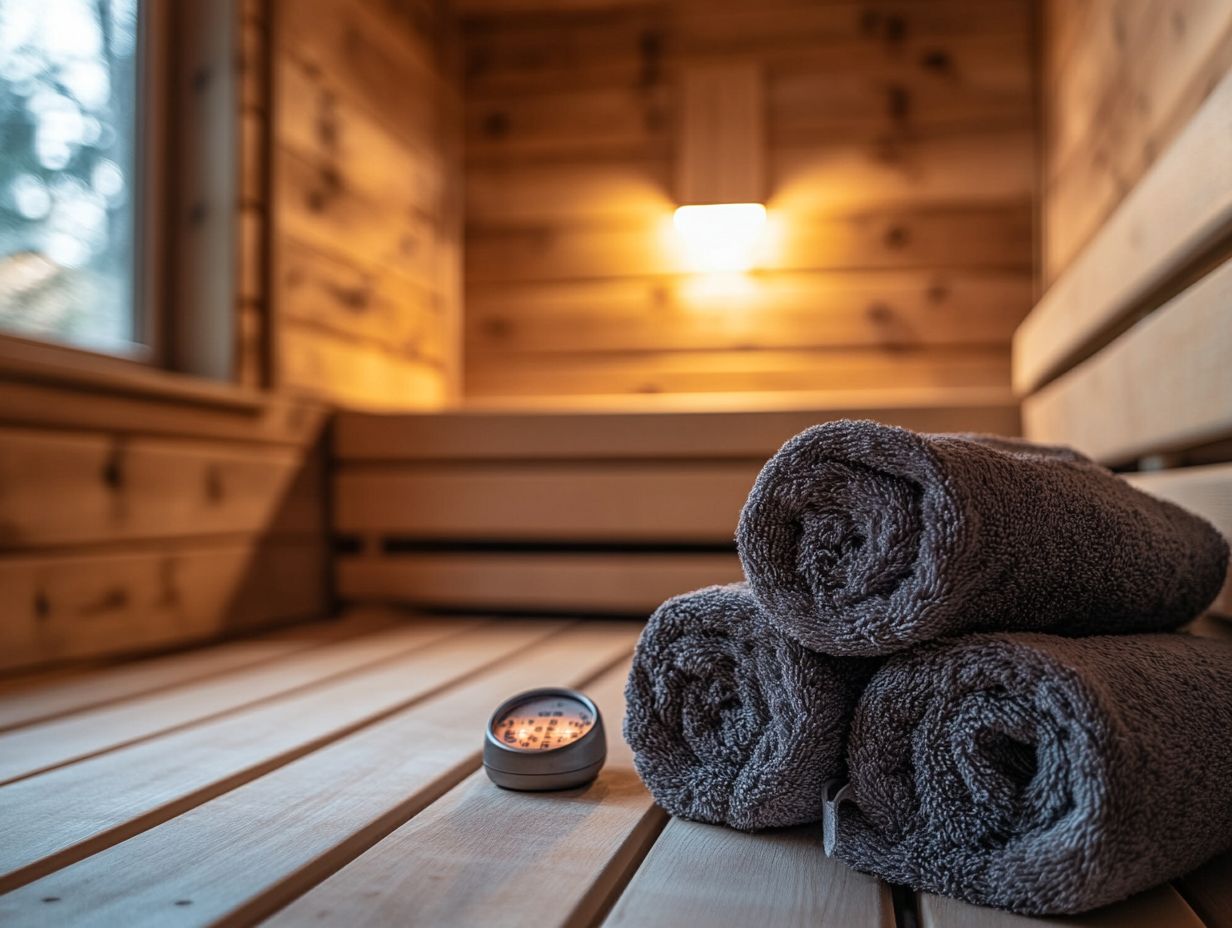
- Choose proper insulation to prevent heat loss and potential safety hazards.
- Select from various insulation materials, each with unique advantages and disadvantages. Consider climate and usage factors when making your choice.
- Maintain your sauna’s insulation regularly to ensure its longevity and effectiveness. Regular cleaning, repairs, and troubleshooting can help prevent potential issues and extend the lifespan of your sauna.
Understanding Sauna Insulation
Sauna insulation plays an important role in outdoor saunas. It ensures that you enjoy optimal energy efficiency and comfort by minimizing heat loss while keeping the desired temperature just right.
Familiarizing yourself with various insulation materials like mineral wool, fiberglass, and cellulose is essential for achieving effective insulation that not only protects the structure but also manages condensation.
Proper insulation elevates your sauna experience while enhancing its longevity and usability. It s an essential factor in your sauna construction journey.
Importance of Proper Insulation
Proper insulation in your sauna greatly enhances energy efficiency and heat retention. This is essential for a truly comfortable and enjoyable experience.
When insulation is installed correctly, it minimizes heat loss. This allows your sauna to reach and maintain those ideal temperatures with ease, maximizing your enjoyment and translating to noticeably lower energy costs over time.
Quality insulation is vital for preventing moisture-related issues, which can occur when there is too much humidity inside the sauna. These problems can lead to mold and degradation of your sauna’s interior. By effectively managing both temperature and humidity, a well-insulated sauna creates a more inviting atmosphere, enhancing relaxation and well-being for everyone who steps inside. Additionally, understanding sauna wiring and maintenance is crucial for maintaining its integrity and safety.
Types of Sauna Insulation
You have a range of insulation materials to choose from for sauna construction, each presenting distinct advantages in how well it keeps heat and environmental impact.
Here are some exciting options to consider:
- Choose mineral wool for its excellent thermal performance.
- Opt for fiberglass for a lightweight and economical choice.
- Select cellulose for its eco-friendliness and superior air sealing.
- Consider straw bales for a natural insulation option.
- Use natural fibers like hemp for sustainability.
Each choice enhances the sauna experience while aligning with your commitment to sustainability.
Comparison of Different Materials
When you compare different insulation materials for saunas, you’ll discover significant variations in usability tailored to various sauna designs. Understanding these nuances is crucial if you’re a builder aiming to create an efficient and comfortable sauna environment.
Take mineral wool, for example; it’s highly regarded for its exceptional thermal performance and soundproofing capabilities, making it an excellent choice for creating a serene atmosphere. On the other hand, fiberglass insulation provides a lightweight and economical option, though it might struggle with moisture control in high-humidity settings.
Then there s cellulose, crafted from recycled paper, which shines with its eco-friendliness and superior air sealing. However, it requires careful handling to ensure it stays dry and avoids mold growth.
Each material brings its own unique advantages and limitations. As a sauna builder, it s essential to consider these factors and tailor your choice to meet specific design requirements and sustainability goals.
Start your sauna insulation project today to enjoy all these amazing benefits!
Factors to Consider in Sauna Insulation
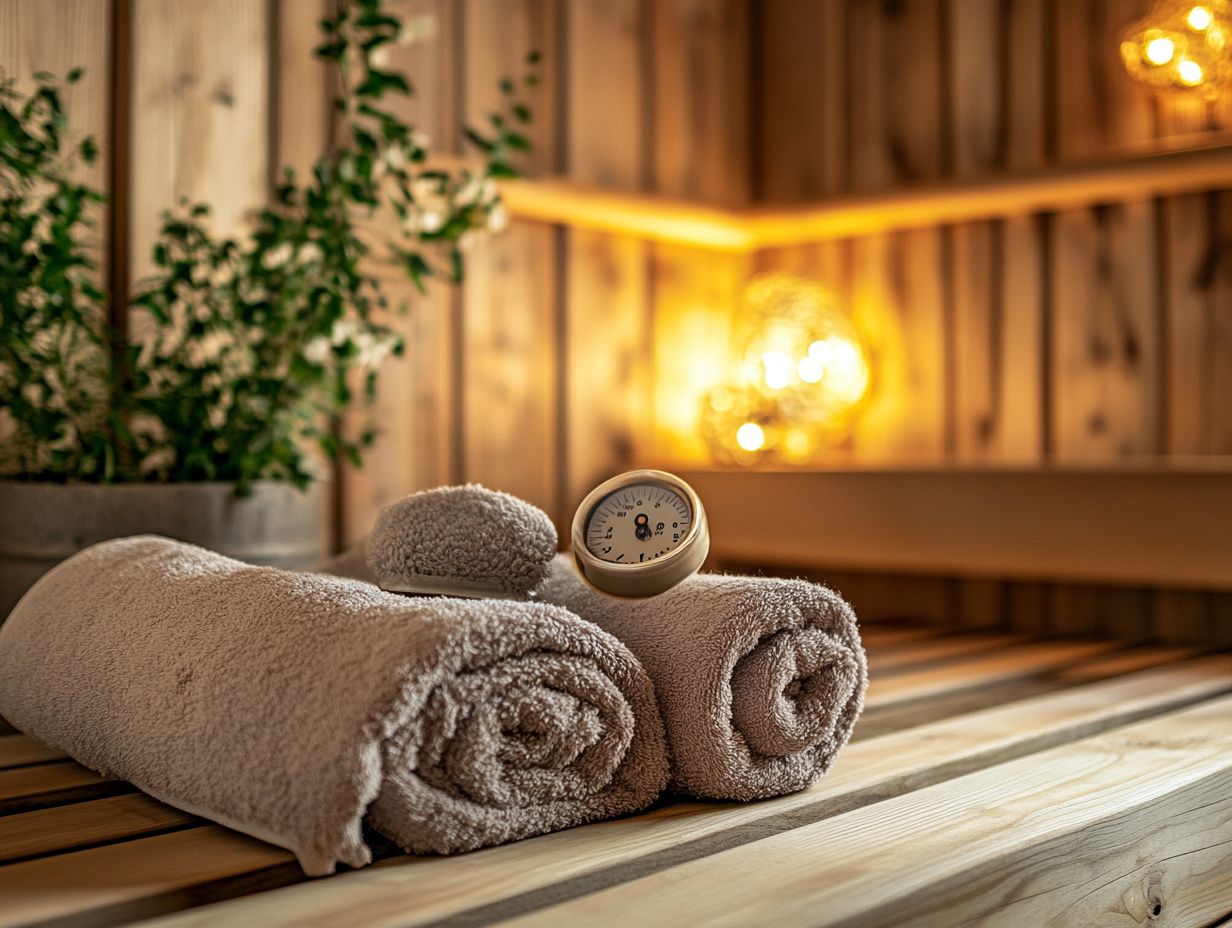
Choose insulation materials for your sauna carefully. Consider your local climate, usage frequency, and the required insulation thickness.
Each of these elements is vital for ensuring your sauna remains a haven of warmth and comfort.
Climate and Usage Considerations
Understanding your local climate and how often you plan to use the sauna is key when selecting insulation materials. The right choice boosts usability and saves energy.
For damp, humid climates, moisture-resistant insulation is a must!
If you live in a dry area, choose insulation that keeps heat in.
How often you enjoy your sauna also affects your material choice. For frequent users, investing in high-quality insulation can lead to long-term energy savings.
This thoughtful approach not only elevates your sauna experience but also enhances its performance, making it a savvy investment for any sauna enthusiast.
Maintaining Sauna Insulation
Keep your sauna’s insulation in top shape for lasting performance. This requires regular cleaning, prompt repairs, and diligent attention to moisture issues. By prioritizing these tasks, you ensure a consistently enjoyable and efficient sauna experience.
Cleaning and Repairs
Regular cleaning and prompt repairs of insulation materials are essential for effectiveness and moisture control.
It’s important to know the different types of insulation, like fiberglass, foam, and cellulose, as each needs its own cleaning method. For example, gently vacuum fiberglass insulation to remove dust, while foam insulation may require a delicate wash with mild soap and water.
Address any signs of wear, like fraying or moisture absorption, immediately. Moisture can lead to mold, compromising air quality and sauna functionality. To ensure the best performance, it’s also important to understand the different sauna heaters. Stay vigilant and monitor these indicators to preserve your insulation’s integrity and your sauna’s atmosphere.
Troubleshooting Common Insulation Issues
To troubleshoot insulation issues, identify problems early on and implement effective solutions. This proactive approach keeps insulation effectiveness high, letting you enjoy your sauna fully.
Identifying and Resolving Problems
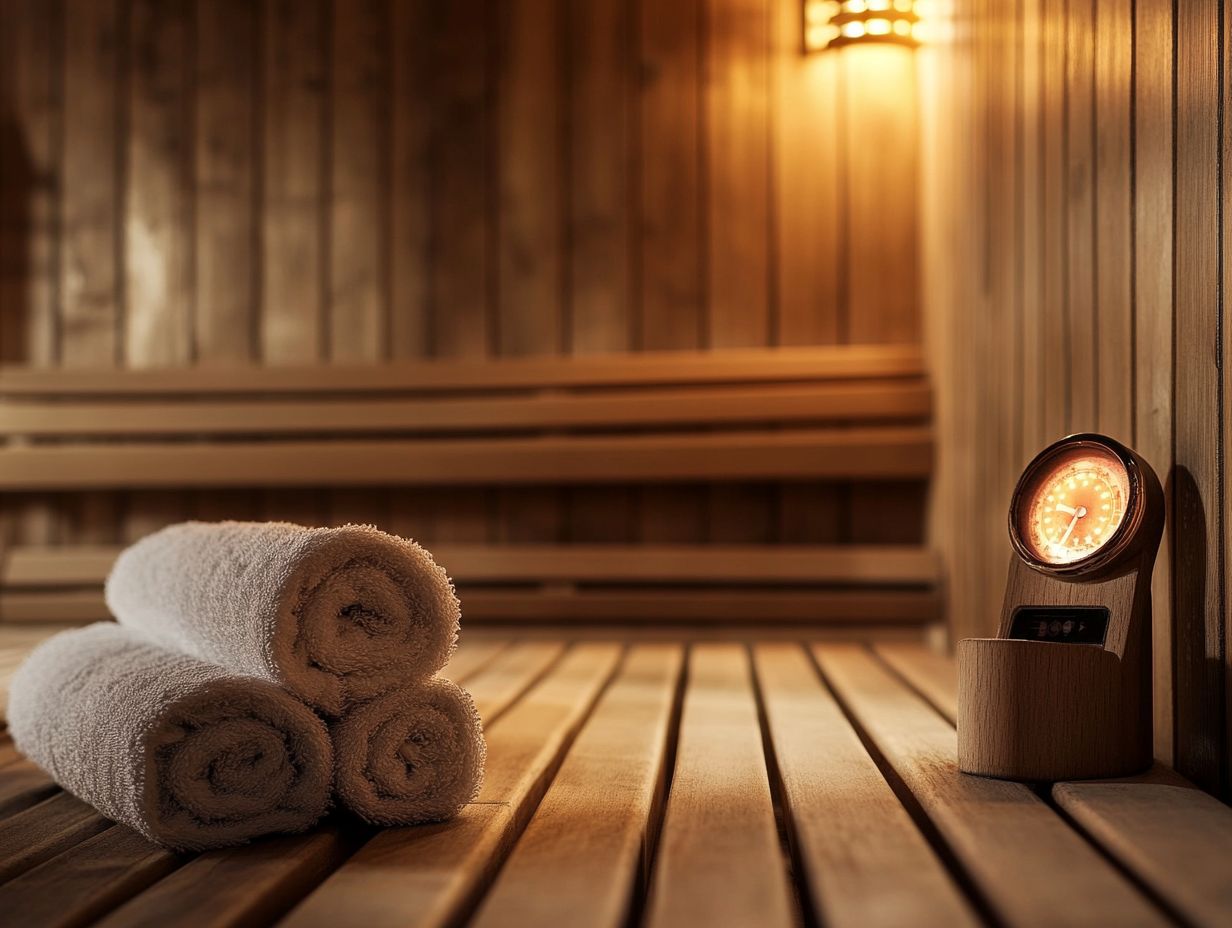
Identifying and resolving insulation issues quickly is essential for maintaining energy efficiency and preventing problems like condensation.
Look for damp areas on walls and ceilings. These may show poor insulation.
Check for drafts around windows, doors, and vents. Temperature fluctuations inside the sauna also indicate insulation quality. If you notice excessively cold spots, it s a clear signal that improvements are needed.
By sealing gaps, adding insulation where needed, and ensuring all openings fit snugly, you can create a more comfortable and efficient sauna experience.
Preventive Measures and Best Practices
By adopting preventive measures and best practices, you can greatly enhance your sauna experience! You’ll enjoy a cozy and inviting atmosphere during every session.
Regular inspections are vital. They help you spot potential issues early, allowing for timely repairs and keeping your sauna functional.
Proper ventilation is crucial. It regulates humidity levels and prevents mold growth, ensuring a fresh environment.
Effective moisture control methods, such as using barriers and promoting air circulation, can elevate your sauna’s performance. These practices create a more enjoyable atmosphere and ensure efficient operation, maximizing your health and relaxation.
Frequently Asked Questions
What is the purpose of sauna insulation?
Sauna insulation helps trap heat inside, creating a comfortable and efficient environment for users.
What are the most common types of sauna insulation?

The most common types of sauna insulation include fiberglass, mineral wool, and foil bubble wrap. Explore these options and find the best fit for your sauna!
How often should I check and maintain my sauna’s insulation?
You should check and maintain your sauna s insulation at least once a year. If you use it frequently, check more often.
Can I insulate my sauna myself?
Yes, you can insulate your sauna yourself. However, it’s best to consult a professional for optimal results.
Does sauna insulation affect energy consumption?
Yes! Proper insulation helps reduce energy consumption and saves on heating costs.
What are some signs that my sauna insulation needs to be replaced?
Signs include uneven heating, visible wear or damage, and increased energy bills.

